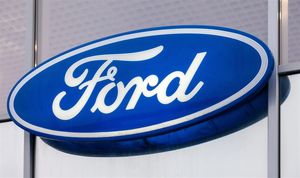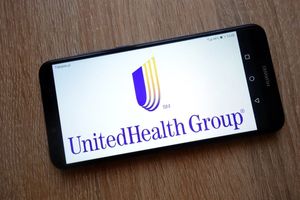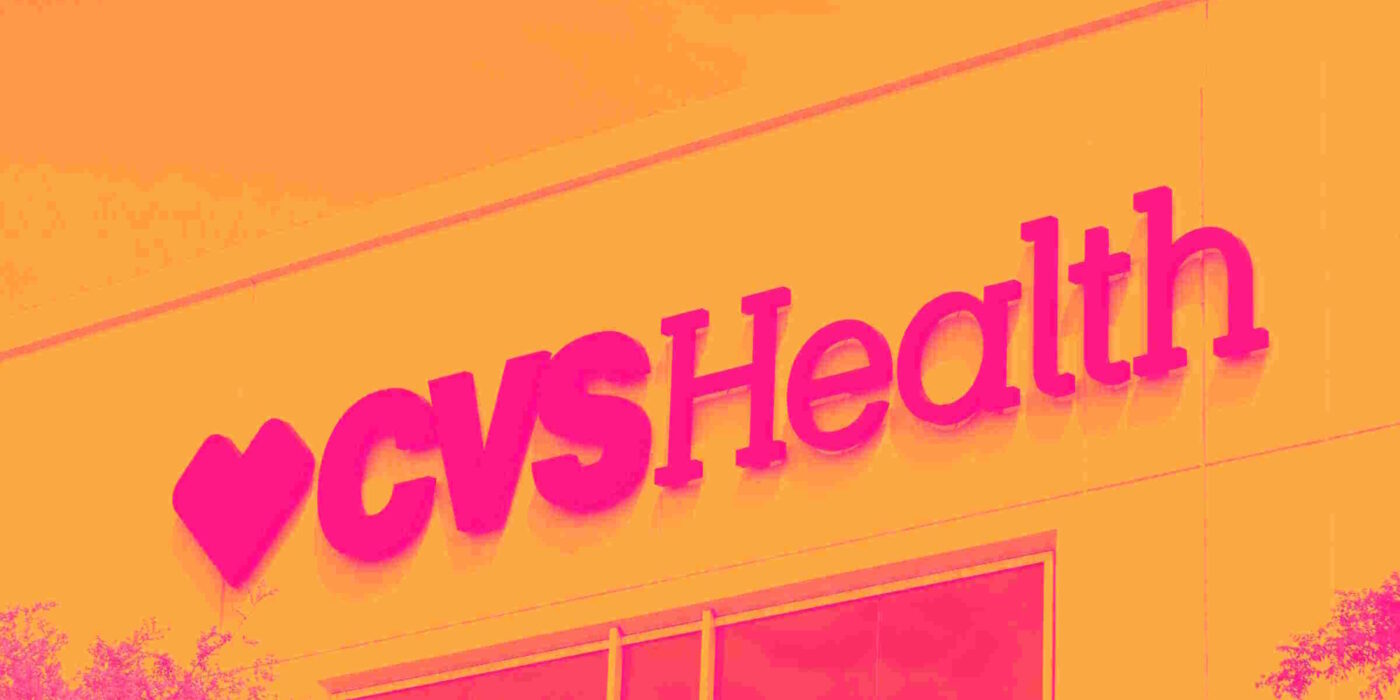
Diversified healthcare company CVS Health (NYSE: CVS) reported revenue ahead of Wall Streets expectations in Q3 CY2025, with sales up 7.8% year on year to $102.9 billion. Its non-GAAP profit of $1.60 per share was 17.9% above analysts’ consensus estimates.
Is now the time to buy CVS Health? Find out by accessing our full research report, it’s free for active Edge members.
CVS Health (CVS) Q3 CY2025 Highlights:
- Revenue: $102.9 billion vs analyst estimates of $98.81 billion (7.8% year-on-year growth, 4.1% beat)
- Adjusted EPS: $1.60 vs analyst estimates of $1.36 (17.9% beat)
- Adjusted Operating Income: $3.46 billion vs analyst estimates of $3.10 billion (3.4% margin, 11.8% beat)
- Management raised its full-year Adjusted EPS guidance to $6.60 at the midpoint, a 3.9% increase
- Operating Margin: -3.1%, down from 0.9% in the same quarter last year
- Free Cash Flow was $98 million, up from -$1.42 billion in the same quarter last year
- Same-Store Sales rose 14.3% year on year (15.5% in the same quarter last year)
- Market Capitalization: $104.3 billion
CEO Commentary "CVS Health uniquely delivers what the people we serve want the most: a connected, simpler experience that improves health and simplifies care. Our leadership team has stabilized operations and is focused on businesses and markets where we can succeed. As a result, we are making progress on our journey to be America's most trusted health care company. Our strong Enterprise performance demonstrates the continued focus we have on operational and financial improvement across our businesses."
Company Overview
With over 9,000 retail pharmacy locations serving as neighborhood health destinations across America, CVS Health (NYSE: CVS) operates retail pharmacies, provides pharmacy benefit management services, and offers health insurance through its Aetna subsidiary.
Revenue Growth
A company’s long-term performance is an indicator of its overall quality. Even a bad business can shine for one or two quarters, but a top-tier one grows for years. Thankfully, CVS Health’s 8.2% annualized revenue growth over the last five years was decent. Its growth was slightly above the average healthcare company and shows its offerings resonate with customers.
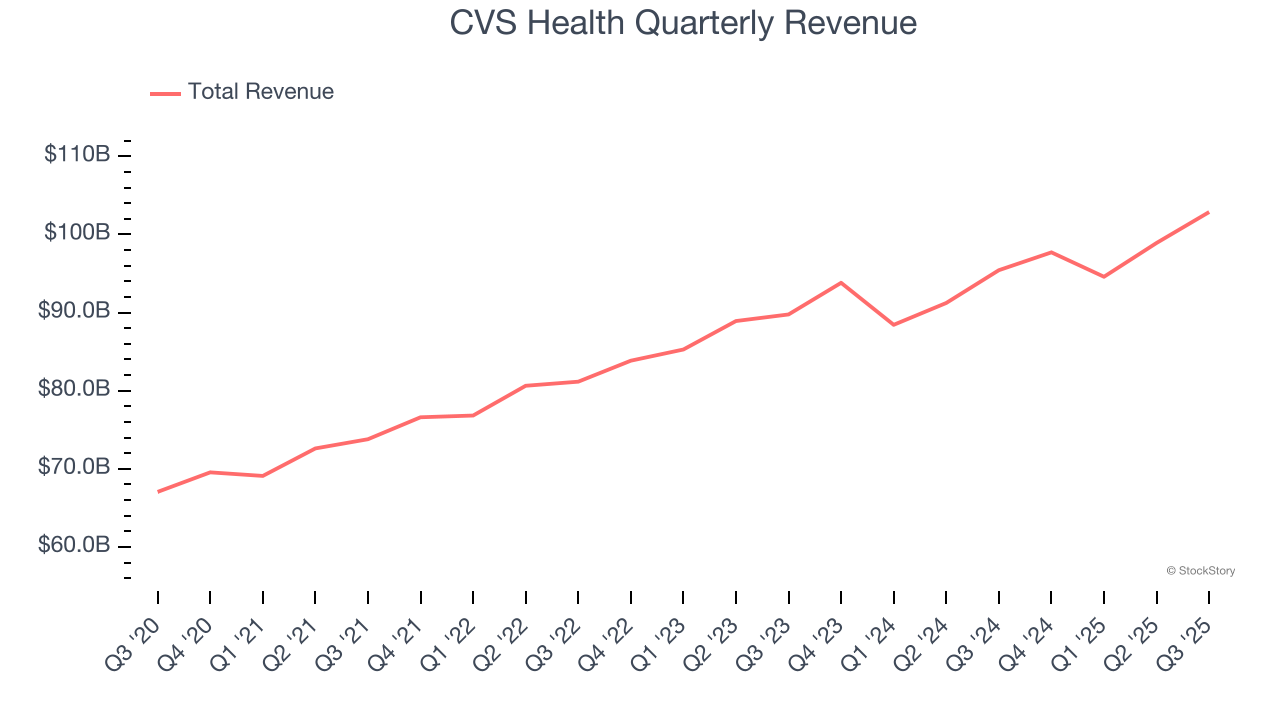
We at StockStory place the most emphasis on long-term growth, but within healthcare, a half-decade historical view may miss recent innovations or disruptive industry trends. CVS Health’s recent performance shows its demand has slowed as its annualized revenue growth of 6.4% over the last two years was below its five-year trend. 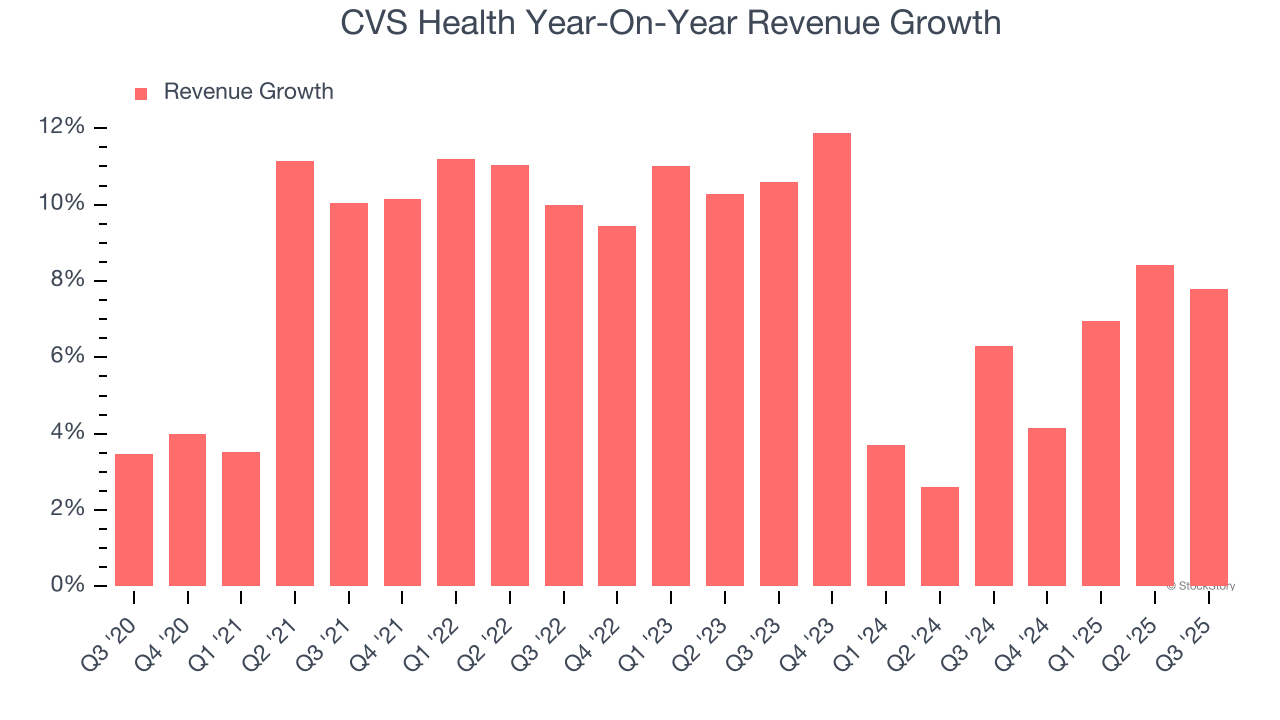
We can better understand the company’s revenue dynamics by analyzing its same-store sales, which show how much revenue its established locations generate. Over the last two years, CVS Health’s same-store sales averaged 11.6% year-on-year growth. Because this number is better than its revenue growth, we can see its sales from existing locations are performing better than its sales from new locations. 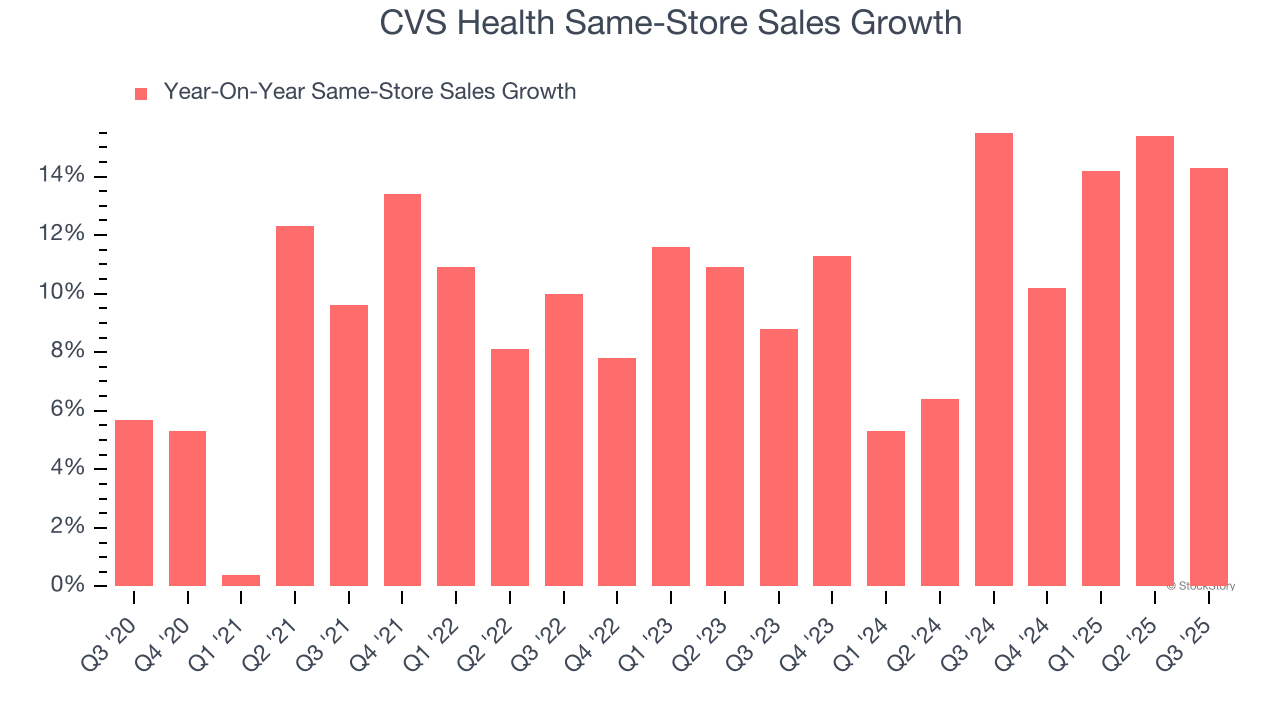
This quarter, CVS Health reported year-on-year revenue growth of 7.8%, and its $102.9 billion of revenue exceeded Wall Street’s estimates by 4.1%.
Looking ahead, sell-side analysts expect revenue to grow 3.1% over the next 12 months, a deceleration versus the last two years. This projection is underwhelming and suggests its products and services will see some demand headwinds.
Today’s young investors won’t have read the timeless lessons in Gorilla Game: Picking Winners In High Technology because it was written more than 20 years ago when Microsoft and Apple were first establishing their supremacy. But if we apply the same principles, then enterprise software stocks leveraging their own generative AI capabilities may well be the Gorillas of the future. So, in that spirit, we are excited to present our Special Free Report on a profitable, fast-growing enterprise software stock that is already riding the automation wave and looking to catch the generative AI next.
Adjusted Operating Margin
Adjusted operating margin is an important measure of profitability as it shows the portion of revenue left after accounting for all core expenses – everything from the cost of goods sold to advertising and wages. It’s also useful for comparing profitability across companies because it excludes non-recurring expenses, interest on debt, and taxes.
CVS Health was profitable over the last five years but held back by its large cost base. Its average adjusted operating margin of 4.7% was weak for a healthcare business.
Looking at the trend in its profitability, CVS Health’s adjusted operating margin decreased by 2 percentage points over the last five years. The company’s two-year trajectory also shows it failed to get its profitability back to the peak as its margin fell by 1.3 percentage points. This performance was poor no matter how you look at it - it shows its expenses were rising and it couldn’t pass those costs onto its customers.
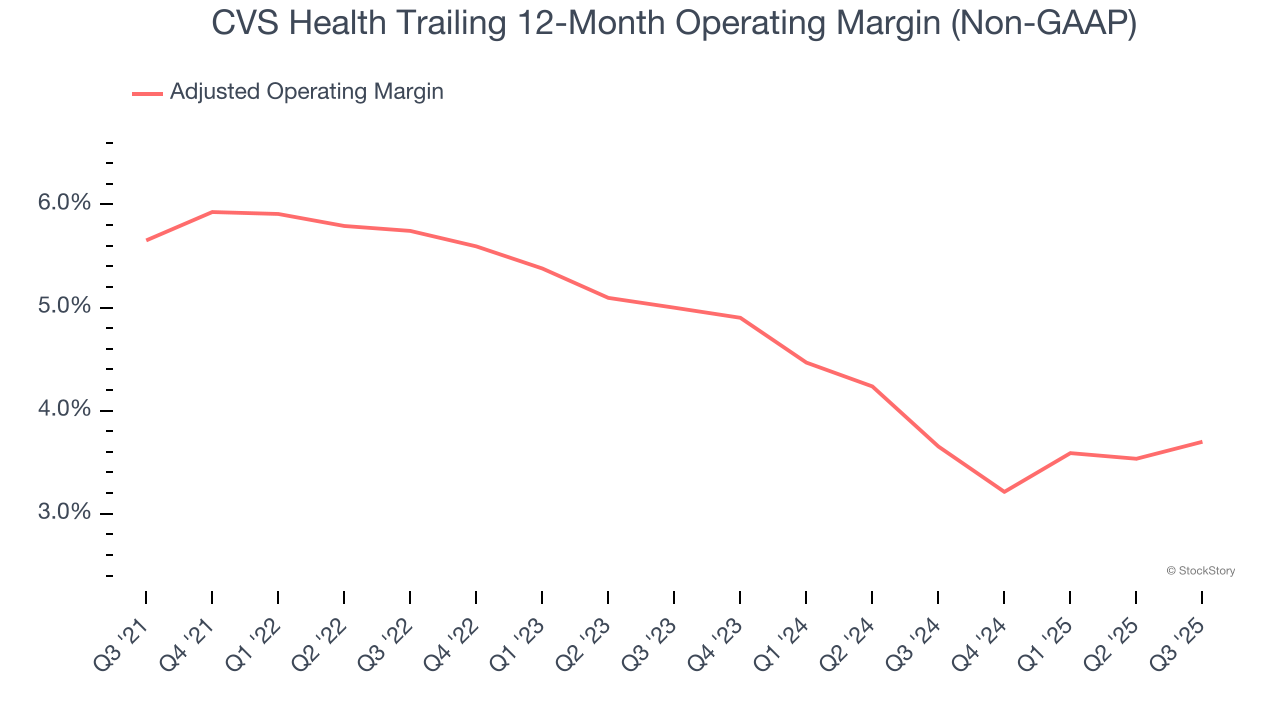
This quarter, CVS Health generated an adjusted operating margin profit margin of 3.4%, in line with the same quarter last year. This indicates the company’s overall cost structure has been relatively stable.
Earnings Per Share
We track the long-term change in earnings per share (EPS) for the same reason as long-term revenue growth. Compared to revenue, however, EPS highlights whether a company’s growth is profitable.
Sadly for CVS Health, its EPS declined by 2.9% annually over the last five years while its revenue grew by 8.2%. This tells us the company became less profitable on a per-share basis as it expanded due to non-fundamental factors such as interest expenses and taxes.
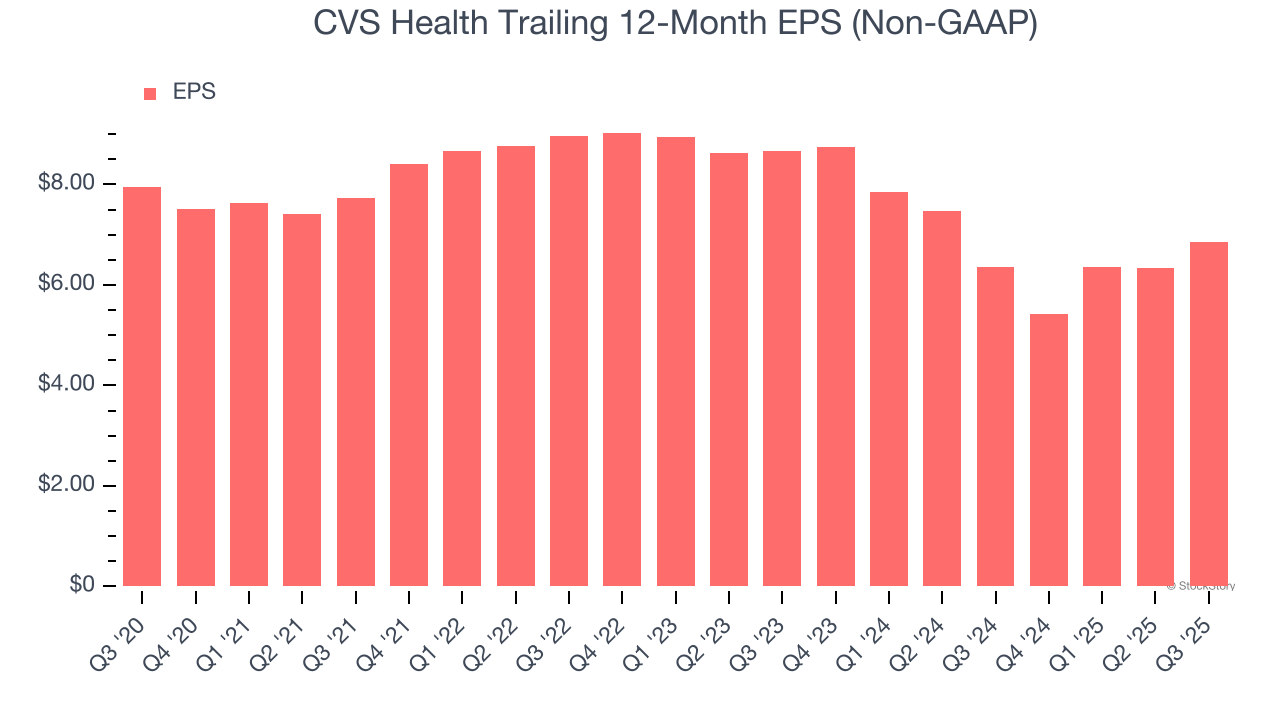
We can take a deeper look into CVS Health’s earnings to better understand the drivers of its performance. As we mentioned earlier, CVS Health’s adjusted operating margin was flat this quarter but declined by 2 percentage points over the last five years. This was the most relevant factor (aside from the revenue impact) behind its lower earnings; interest expenses and taxes can also affect EPS but don’t tell us as much about a company’s fundamentals.
In Q3, CVS Health reported adjusted EPS of $1.60, up from $1.09 in the same quarter last year. This print easily cleared analysts’ estimates, and shareholders should be content with the results. Over the next 12 months, Wall Street expects CVS Health’s full-year EPS of $6.85 to grow 1.5%.
Key Takeaways from CVS Health’s Q3 Results
We enjoyed seeing CVS Health beat analysts’ same-store sales expectations this quarter. We were also glad its revenue outperformed Wall Street’s estimates. Zooming out, we think this was a solid print. The market seemed to be hoping for more, and the stock traded down 3.4% to $79.38 immediately after reporting.
Is CVS Health an attractive investment opportunity right now? What happened in the latest quarter matters, but not as much as longer-term business quality and valuation, when deciding whether to invest in this stock. We cover that in our actionable full research report which you can read here, it’s free for active Edge members.


